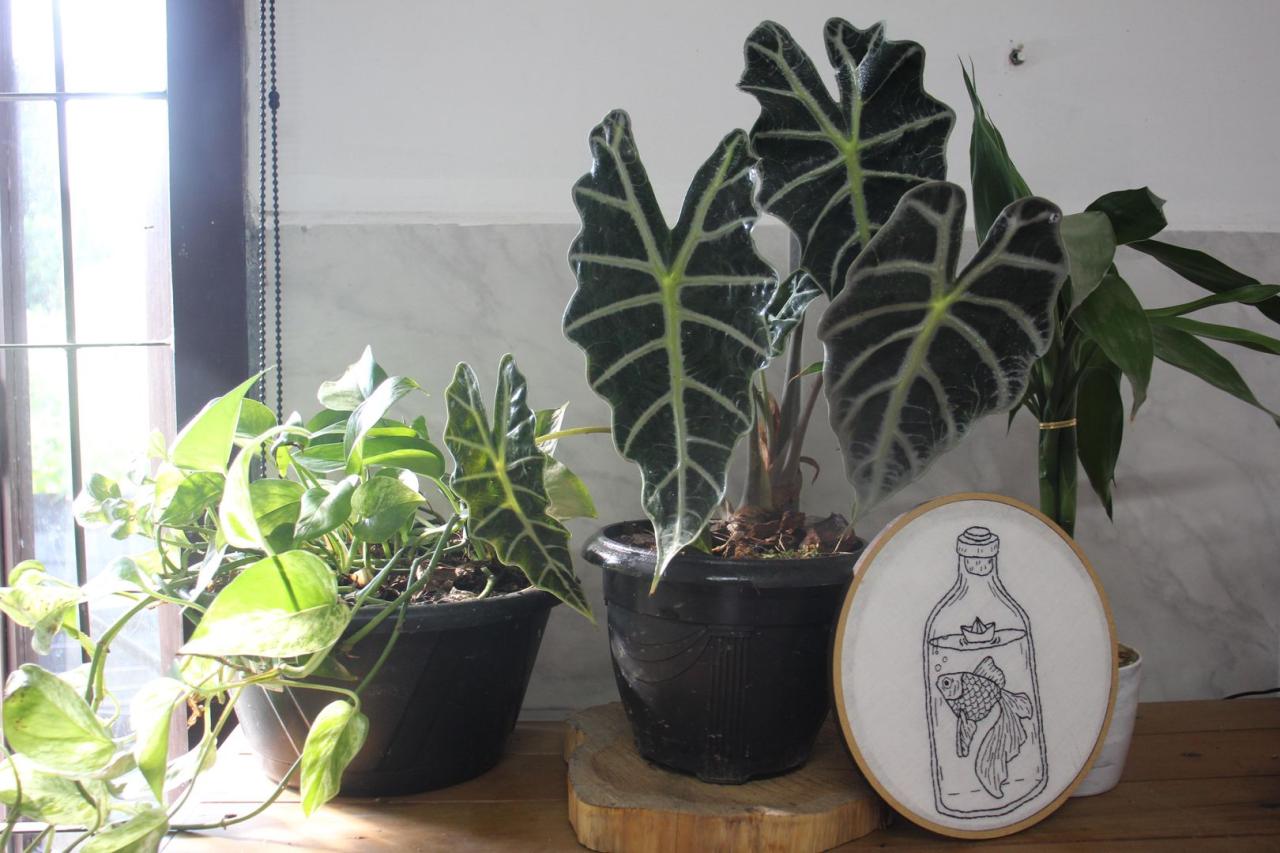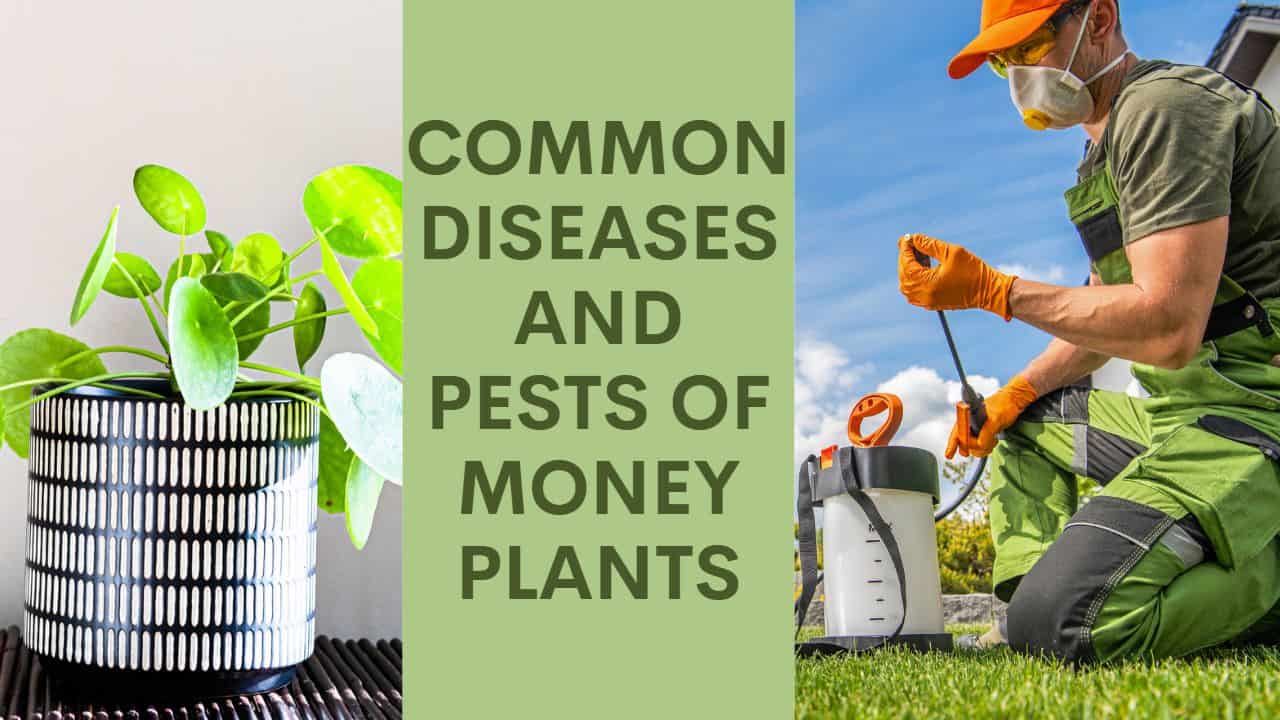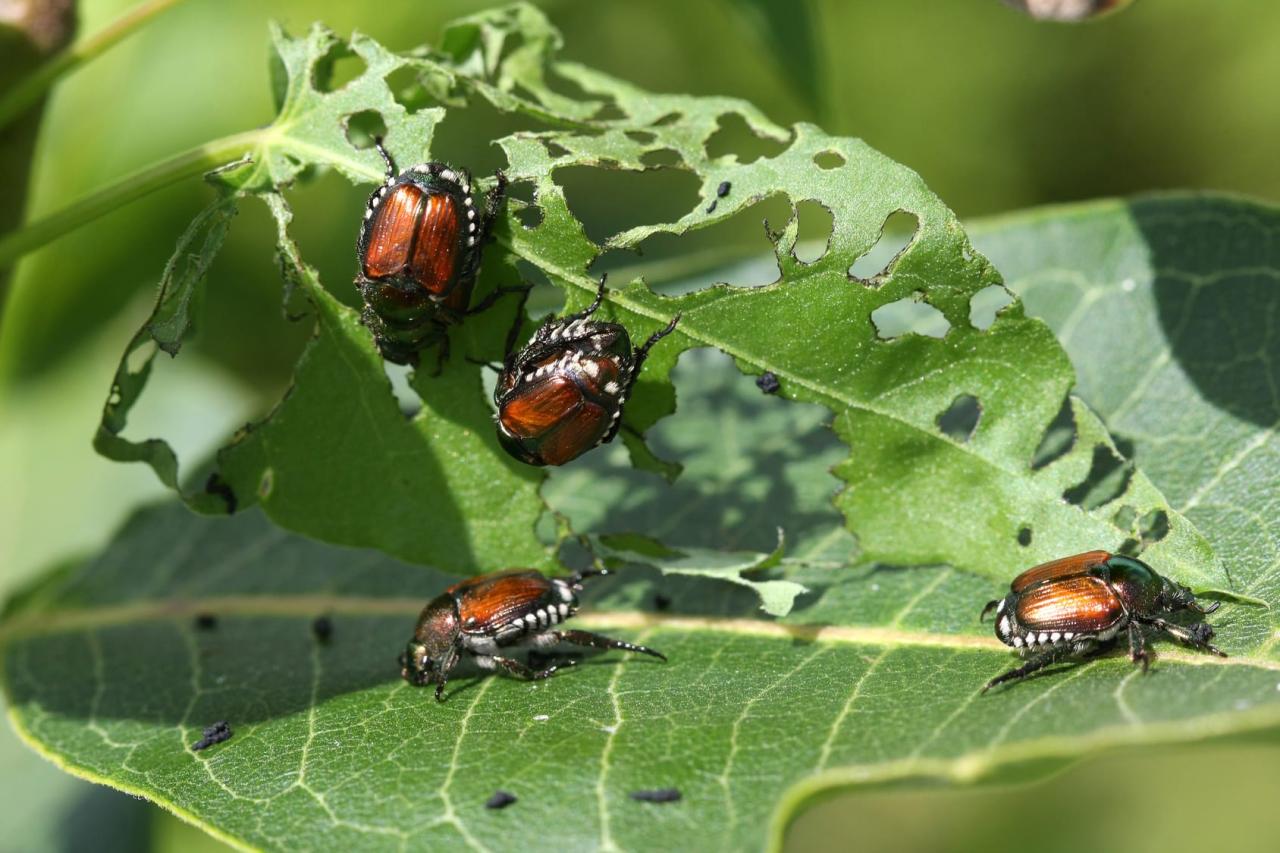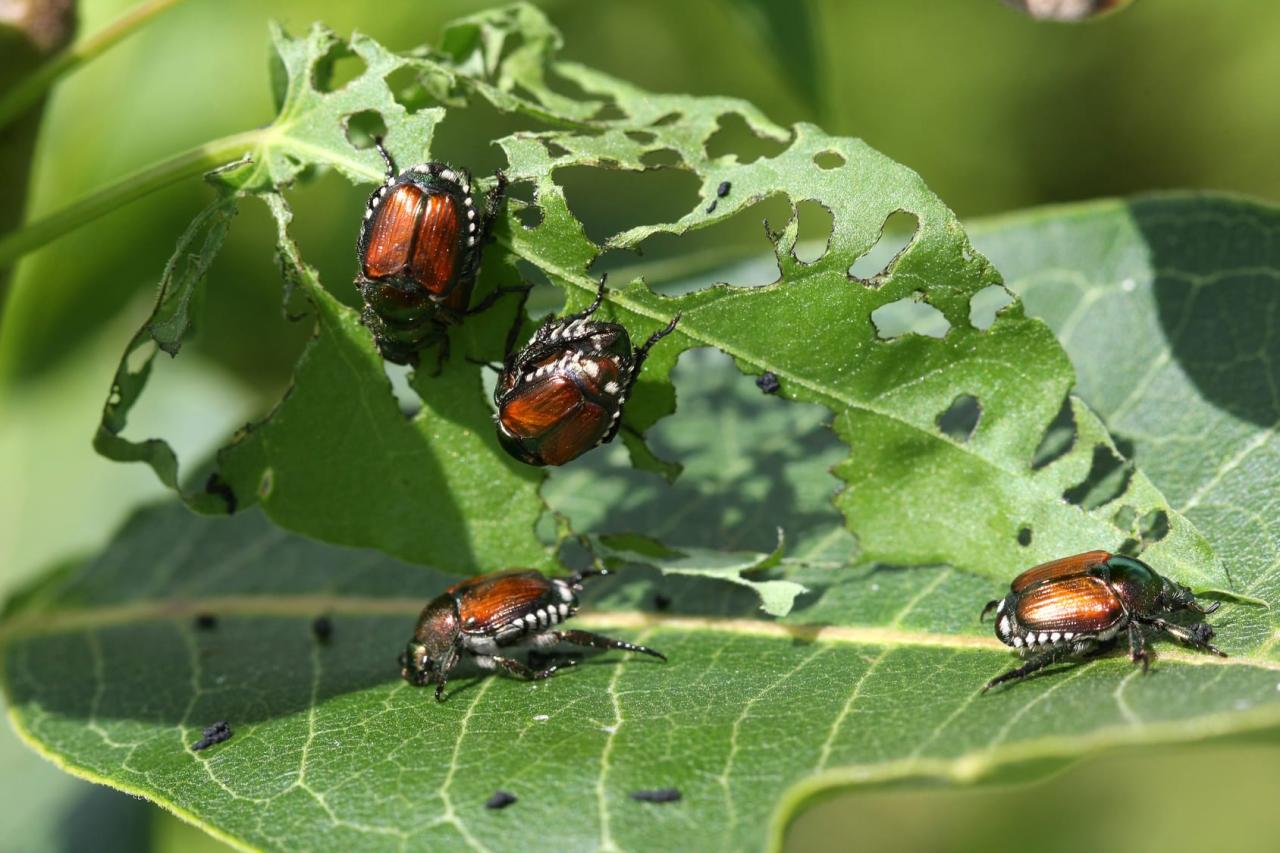How To Prevent Pests From Damaging Your Money Plant is a crucial topic for any plant enthusiast, especially those who cherish the lush greenery of the money plant. This resilient plant, known for its vibrant foliage and air-purifying properties, can be susceptible to various pests that threaten its health and beauty.
From tiny spider mites to voracious mealybugs, these unwelcome visitors can quickly wreak havoc on your beloved money plant, leaving behind unsightly damage and potentially even causing its demise.
Understanding the common pests, recognizing the signs of infestation, and implementing effective prevention and control strategies are essential steps in safeguarding your money plant. This guide will delve into these crucial aspects, equipping you with the knowledge and tools to keep your money plant thriving and pest-free.
Understanding Common Money Plant Pests

Money plants, with their lush, trailing foliage, are a popular choice for indoor gardens. However, these beautiful plants can be susceptible to various pests that can damage their leaves and overall health. Identifying these pests early is crucial for effective control and preserving the vitality of your money plant.
Common Money Plant Pests
Pests commonly found on money plants include:
- Mealybugs: These small, oval-shaped insects are covered in a white, cottony wax. They feed on plant sap, causing yellowing and wilting of leaves. Mealybugs often cluster in leaf axils and along stems, leaving behind a sticky honeydew that attracts ants and can lead to sooty mold growth.
- Spider Mites: These tiny, spider-like creatures are difficult to see with the naked eye. They spin fine webs on the undersides of leaves and feed on plant sap, causing yellowing, stippling, and browning of leaves. Spider mites thrive in dry, warm conditions.
Keeping your money plant pest-free is essential for its health and longevity. While a terrarium environment can provide a controlled atmosphere, it’s crucial to maintain proper humidity levels and avoid overwatering to prevent fungal issues that can attract pests.
If you’re considering a terrarium setup for your money plant, learn more about the specific care requirements How To Care For A Money Plant In A Terrarium. A healthy terrarium can also help deter pests, as it creates a less hospitable environment for them to thrive.
- Scale Insects: Scale insects are small, immobile insects that resemble bumps or scales on the plant’s stems and leaves. They feed on plant sap, causing leaf discoloration and stunted growth. Scale insects are often protected by a waxy covering, making them difficult to control.
- Aphids: Aphids are small, pear-shaped insects that come in various colors, including green, brown, and black. They feed on plant sap, causing leaf curling, distortion, and yellowing. Aphids secrete a sticky honeydew that can attract ants and promote sooty mold growth.
Signs of Pest Infestation
Early detection is crucial for effectively controlling pests and preventing further damage to your money plant. Recognizing the signs of infestation allows you to take prompt action, minimizing the impact on your plant’s health and aesthetics.
Visual Cues
Identifying the signs of pest infestation involves carefully observing your money plant for any unusual changes in its appearance. These visual cues can indicate the presence of pests and the need for immediate intervention.
- Discoloration:Pests often feed on plant sap, leading to discoloration of leaves. This can manifest as yellowing, browning, or even blackening of the foliage.
- Wilting:Pests can damage the plant’s vascular system, hindering the flow of water and nutrients. This can result in wilting leaves, even if the soil is moist.
- Holes in Leaves:Some pests, like caterpillars, chew on leaves, leaving behind noticeable holes. These holes can vary in size and shape depending on the type of pest.
- Webs:Spider mites, a common pest, spin fine webs on the undersides of leaves, creating a noticeable web-like structure.
- Sticky Residues:Aphids and other sap-sucking insects secrete a sticky substance called honeydew. This residue can coat the leaves and stems, giving them a shiny, sticky appearance.
- Presence of Insects:In some cases, you might spot the pests themselves. Carefully inspect the leaves, stems, and undersides of the plant for tiny insects, eggs, or larvae.
Prevention Strategies
A proactive approach is crucial for keeping your money plant healthy and pest-free. By understanding the vulnerabilities of your plant and implementing preventive measures, you can significantly reduce the risk of infestation.
Maintaining a Clean and Pest-Free Environment
A clean environment is the first line of defense against pests. Regularly cleaning your plant and its surroundings can significantly reduce the chances of attracting pests.
Keeping your money plant healthy and pest-free starts with proper care. Understanding the specific needs of your plant for each room in your house, as outlined in this helpful guide, Money Plant Care For Every Room In Your House , will help you maintain a healthy environment that discourages pests.
By providing the right amount of light, water, and humidity, you’ll create a less hospitable environment for insects and mites, ultimately safeguarding your money plant’s vibrant growth.
- Dust Regularly:Dust accumulates on the leaves of your money plant, providing a breeding ground for pests. Regularly dust the leaves with a soft cloth or use a gentle leaf cleaning spray to remove any dust buildup.
- Wipe Down Surfaces:Clean the surfaces around your money plant, including windowsills, shelves, and floors. This helps eliminate any potential food sources or hiding places for pests.
- Inspect New Plants:Before introducing any new plants into your home, carefully inspect them for signs of pests. Quarantine them for a few weeks to ensure they are pest-free before placing them near your money plant.
Regular Inspection and Early Detection
Regular inspection is essential for identifying pests at an early stage. Early detection is crucial as it allows you to take immediate action before the infestation spreads.
- Visual Inspection:Regularly examine your money plant for any signs of pests, including insects, eggs, webbing, or discoloration. Pay close attention to the underside of leaves and stems, as these are common hiding spots for pests.
- Check for Damage:Look for any signs of damage to your money plant, such as holes in the leaves, wilting, or stunted growth. These are indicators of pest activity.
- Isolate Infected Plants:If you notice any signs of infestation, immediately isolate the infected plant from other plants to prevent the spread of pests.
Natural Pest Control Methods

While chemical pesticides can be effective in controlling pests, they can also be harmful to your money plant, your home, and the environment. Natural pest control methods offer a safer and more sustainable alternative. These methods rely on using natural ingredients and techniques to repel and eliminate pests without resorting to harsh chemicals.
Using Essential Oils
Certain essential oils possess insecticidal properties that can deter pests. These oils can be diluted with water and sprayed on your money plant or used in a diffuser to create a pest-repelling atmosphere.
- Peppermint oil:This oil is known to repel aphids, ants, and mosquitoes.
- Tea tree oil:Tea tree oil is effective against fungal infections and can also repel some insects.
- Lavender oil:Lavender oil has a calming effect on humans but is a repellent for many insects.
- Lemon oil:This oil is a natural insecticide that can be used to repel aphids, whiteflies, and other pests.
Insecticidal Soaps
Insecticidal soaps are made from potassium salts of fatty acids derived from plants. They work by disrupting the cell membranes of insects, leading to dehydration and death. These soaps are generally safe for plants and pets when used as directed.
Neem Oil, How To Prevent Pests From Damaging Your Money Plant
Neem oil is extracted from the seeds of the neem tree and has been used for centuries as a natural insecticide. It disrupts the growth and development of insects, preventing them from feeding and reproducing. Neem oil can be applied to your money plant as a spray or diluted in water and used as a soil drench.
- Neem oil can be used to control a wide range of pests, including aphids, whiteflies, mealybugs, and spider mites.
- It is important to note that neem oil can be toxic to fish and other aquatic life, so avoid using it near water sources.
Companion Planting
Companion planting involves growing different plants together to benefit from their synergistic relationships. Certain herbs have pest-repelling properties that can help protect your money plant from insects.
- Basil:Basil is known to repel flies, mosquitoes, and aphids.
- Rosemary:Rosemary is effective against moths, beetles, and flies.
- Marigolds:Marigolds are known to repel nematodes and other soil-borne pests.
- Garlic:Garlic repels aphids, mites, and other insects.
Chemical Pest Control Options: How To Prevent Pests From Damaging Your Money Plant
Chemical pesticides can be effective in controlling money plant pests, but they should be used with caution due to potential risks to the plant, yourself, and the environment.
Types of Chemical Pesticides
There are various chemical pesticides available for money plant pest control, each with its own advantages and disadvantages.
- Insecticides:These target insects and are typically available in spray, dust, or granules. Some common insecticides used for money plant pests include pyrethrin, neem oil, and malathion.
- Fungicides:These are used to control fungal diseases, which can sometimes weaken the plant and make it more susceptible to pests. Examples include copper fungicide and sulfur fungicide.
- Miticides:These target mites, which can cause damage to money plant leaves. Common miticides include abamectin and bifenthrin.
Risks and Benefits of Chemical Pesticides
- Benefits:Chemical pesticides can be highly effective in controlling pest infestations, especially severe ones. They can provide rapid results and prevent further damage to the plant.
- Risks:Chemical pesticides can pose risks to the plant, yourself, and the environment. They can damage the plant’s leaves, stems, and roots, and can also harm beneficial insects and pollinators. Chemical pesticides can also be toxic to humans and pets if not handled properly.
Safety Precautions and Application Methods
- Read the label carefully:Before using any chemical pesticide, always read the label carefully and follow the instructions. This will help ensure that you are using the product safely and effectively.
- Wear protective gear:When handling chemical pesticides, wear protective gear, such as gloves, goggles, and a mask. This will help protect you from harmful fumes and contact with the pesticide.
- Apply in a well-ventilated area:Apply chemical pesticides in a well-ventilated area to avoid inhaling harmful fumes. It’s best to apply outdoors or in a well-ventilated room.
- Avoid over-application:Over-application of chemical pesticides can harm the plant and potentially lead to resistance in pests. Use the recommended amount and frequency.
- Store properly:Store chemical pesticides in their original containers in a cool, dry, and secure location out of reach of children and pets.
Outcome Summary

By combining proactive prevention measures with timely intervention, you can effectively protect your money plant from pests and ensure its continued growth and beauty. Regular inspections, a clean and pest-free environment, and the use of natural or chemical control methods, when necessary, are key to maintaining the health of your plant.
Remember, a healthy and vibrant money plant not only enhances the aesthetics of your home but also contributes to a cleaner and healthier indoor environment.
FAQ Resource
What are the most effective natural remedies for controlling aphids on money plants?
A mixture of water and dish soap, diluted neem oil, or a spray of insecticidal soap can effectively control aphids on money plants.
How often should I inspect my money plant for signs of pests?
It’s recommended to inspect your money plant weekly, paying close attention to the underside of leaves and stems for any signs of pests or damage.
Can I use a commercial pesticide on my money plant?
While commercial pesticides can be effective, it’s crucial to choose a product specifically designed for indoor plants and to follow all safety precautions carefully.
How do I know if my money plant needs repotting?
If you notice roots growing out of the drainage holes, the plant is becoming rootbound and needs a larger pot.
